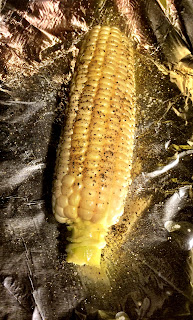Stoney and I have been on a vegetable kick lately, and I decided to make a vegetarian version of one of my favorite soups: Borscht! I've made borscht in the past using the stovetop, and while it's always delicious, it's a pain in the neck to make. The solution? Crock pot it! I also had the vitamin to help me puree up some of the recipe, so that was an extra plus.
What you need:
- 1 tbsp olive oil
- 1 large yellow onion, roughly chopped
- 1 carrot, peeled and chopped
- 4 small celery stalks
- 4 small daikons, peeled and chopped
- 1 tbsp minced garlic
- 1 leek, diced
- 3 beets, peeled and chopped
- 2 14oz. cans diced tomatoes
- 1 potato, peeled and diced
- 1/2 medium green cabbage, shredded
- 4 cups vegetable broth
- 1 tsp sugar
- salt & pepper, to taste
- Optional toppings: yogurt or sour cream; horseradish or dill
To begin, heat 1 tbsp olive oil in a skillet and then sauté the garlic, onion, celery, carrots, and daikon, seasoning with salt and pepper. Once everything has softened, pour it into a blender along with one can of tomatoes and puree it.
Next, sauté the leeks in the skillet that you used for the onion mixture, adding a little more oil if necessary.
Put your puree in the slow-cooker, and then add in the other ingredients (except the optional garnishes).
Let it cook on low for 6-8 hours (or on high for 3-4). I had planned to whip up some horseradish yogurt to serve it with, but I forgot yogurt at the store, so that didn't happen, but I still maintain that it would be outrageously delicious. Sour cream and dill would also be a tasty addition.








































